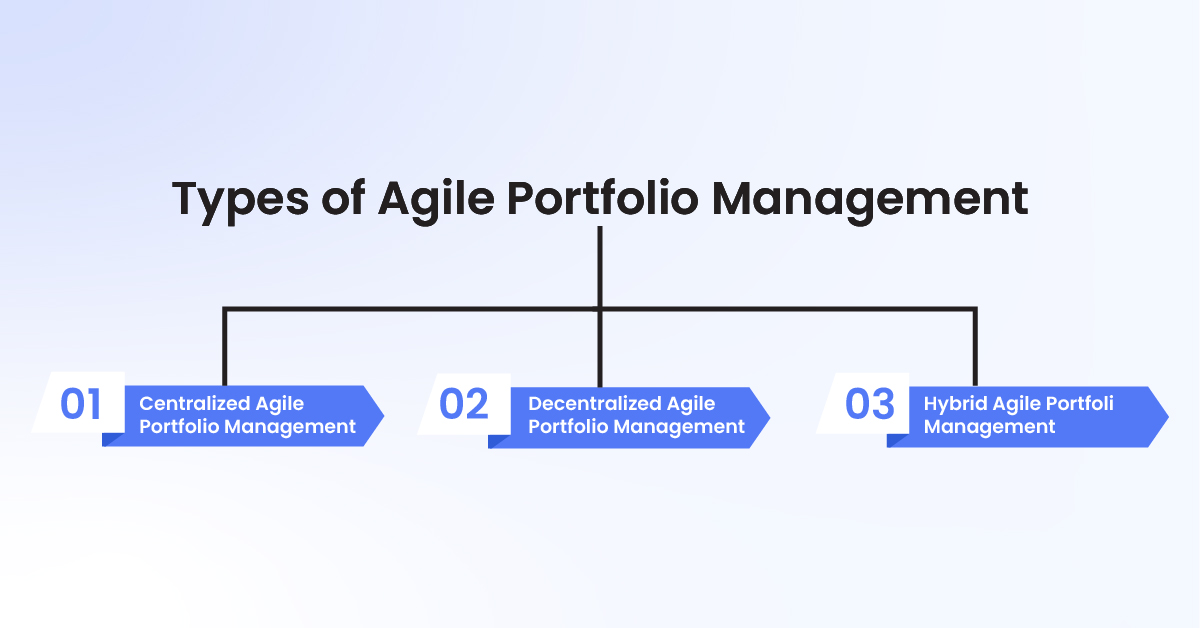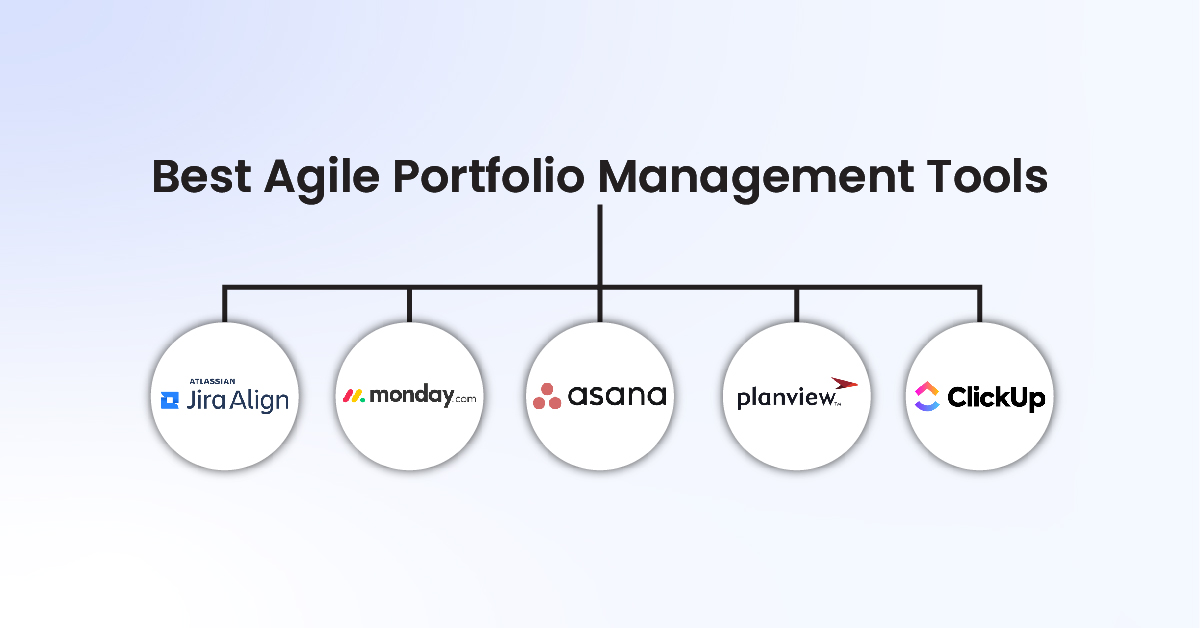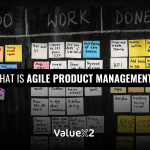Say goodbye to rigid plans that hold you back! Boost your business with Agile Portfolio Management- the key to managing projects smarter and growing faster in 2025
 Introduction
Introduction
Please look at any business today, whether a large corporation or a startup. Everyone wants to climb up the success ladder faster. They want to get instant results. This is where Agile Portfolio Management can help.
Recently, PMI (Project Management Institute) conducted research. This helped them find that organizations that use Agile portfolio management report:
- 71% faster time‑to‑market
- 30% higher customer satisfaction
How is this possible? It is because they can pivot quickly and focus on things that matter. But what is Agile portfolio management? How does this help you do so? It can all be very confusing. Especially if you are new to the world of agility, but don’t worry! We are here to break it down for you.
In this blog, you will learn about Agile Portfolio Management. Why is it important? The phases of Agile Portfolio Management. The different types of Agile Portfolio Management, top Agile Portfolio Management tools, software, and much more. Let’s dive in.
What is Agile Portfolio Management?
In Agile Portfolio management, you can handle multiple projects and programs simultaneously in an Agile way. Imagine you have many projects, like building apps or creating new products. Agile Portfolio Management helps you smartly manage all of them. It uses simple ideas:
- Stay flexible: You can change plans if something isn’t working.
- Work in small steps: Finish little pieces quickly instead of waiting forever.
- Keep improving: Learn from what you do and make it better next time.
Why does it matter?
Traditional portfolio management is slow. It takes too long to deliver results. Agile Portfolio Management helps companies react quickly.
- A McKinsey study shows companies using agile portfolio strategies perform better than peers by 2x in revenue growth.
- Gartner predicts that by 2026, 60% of large enterprises will adopt agile portfolio management as their default model.
In simple terms, APM helps organizations:
- Deliver projects to customers fast.
- Make sure every project helps the company’s goals.
- Switch things up when needed without stress.
- Come up with new ideas and try them out.
Traditional vs Agile Portfolio Management (Comparison Table)
| Feature | Traditional Portfolio Management | Agile Portfolio Management |
| Planning | Fixed and rigid | Flexible and ready to improve |
| Feedback | At the end | Continuous and early |
| Change Handling | Resisted | Welcomed |
| Goal Alignment | Top-down | Collaborative and dynamic |
| Time to Market | Long | Faster delivery |
| Visibility into Progress | Limited | Real-time tracking |
Types of Agile Portfolio Management

Not every company is the same, so Agile Portfolio Management has different styles. You can pick the one that works best for your company’s size and way of doing things. Here’s a super simple breakdown of the three main types:
Centralized Agile Portfolio Management
- What it is: One main team makes all the big decisions.
- Who it’s for: Big companies with lots of complex projects.
- Why it’s great: It keeps everything organized, tracks money carefully, and avoids risks.
- Best when: You want things to stay consistent across all projects.
Decentralized Agile Portfolio Management
- What it is: Each team or group manages its projects.
- Who it’s for: Startups or companies with small, independent teams.
- Why it’s excellent: Teams can make fast decisions and try new ideas.
- Best when: You want to move quickly and be super creative.
Hybrid Agile Portfolio Management
- What it is: A mix of the two—some decisions come from the top, and teams make some.
- Who it’s for: Companies that want a balance of control and freedom.
- Why it’s great: It gives you structure but lets teams be flexible.
- Best when: You want the best of both worlds (most companies use this!).
Check out – Different Agility Certifications offered by ValueX2.
Different Phases of Agile Portfolio Management
Agile Portfolio Management has four primary phases. These phases help ensure that the projects you are working on align with your goals and deliver value.
1. Strategic Planning Phase
This is the starting point. It is where Agile Portfolio Management begins.
- Define your goals: What do we want to achieve this year?
- Prioritize: Which projects are most important?
- Allocate resources: Who will do what? How much time and money will it take?
Example: There is a company, say ABC Pvt. Ltd., that wants to launch three new apps in 2025. In this phase, they decide Which app is more important? How much budget does each one get?
Key Tool: Strategic Roadmap (a visual plan of all projects)
2. Execution and Iteration Phase
This is where your teams start building, testing, and improving.
- Work happens in short sprints (2–4 weeks).
- Feedback is gathered regularly.
- Teams stay focused and deliver small parts frequently.
Example: Instead of spending six months building the entire app, your team gets a basic version out in just 3 weeks. Then, you listen to what your customers say. Then, based on their feedback, you try to make it better.
Key Tool: Kanban Boards or Scrum Boards
3. Monitoring and Metrics Phase
Here, you track progress and measure results.
- Are we on track?
- Is the user happy?
- Are we using our time and money as they should be?
You make data-driven decisions using real-time dashboards.
Key Metric Examples:
- Cycle Time – How fast work gets done
- Team Velocity – How much your team can handle
- Value Delivered – What did we give the customer?
4. Feedback and Adaptation Phase
This is what makes Agile so powerful.
- Reflect on what worked and what didn’t.
- You adapt your plans.
- Improve how you work again and again.
Example: After two sprints, the team sees customers not using a particular feature. They remove it and focus on what users want.
Key Tool: Retrospective Meetings (look back, learn, and improve)
Best Agile Portfolio Management Tools (With Comparison)

You need the right Agile portfolio management software to make all this work. Here’s a comparison table of the top tools in 2025:
| Tool | Best For | Pricing | Key Features |
| Jira align | Large enterprises | $10/ user/ month | Strategic alignment, live roadmaps, OKRs |
| Monday.com | Teams of all sizes | $8/ user/ month | Visual planning, dashboards, automation |
| Asana | Marketing and product teams | $10.99/ user/ month | Goals. Workload view, project portfolios |
| Planview | Complex Portfolio Management | Custom Pricing | Demand Planning, capacity. prioritization |
| ClickUp | All-in-one tool | Basic: Free
Pro: $5/ user |
Goals, tasks, docs, timeline in one place |
Choose Agile portfolio management tools based on your team size, budget, and how much customization you need.
Agile Portfolio Management Best Practices
Want to make it work? Follow these Agile Portfolio Management best practices:
1. Align Everything with Strategy
Don’t just start random projects. Make sure every project supports a goal. Tools like OKRs (Objectives & Key Results) can link every project to a larger business objective.
2. Plan Continuously, Not Just Once a Year
Agile planning is ongoing. Instead of making a 12-month plan and never updating it, revisit and adjust your plans monthly or quarterly.
3. Use Real-Time Dashboards
Don’t wait for weekly updates. You can use real-time Agile portfolio management software. It shows exactly what’s happening across all teams.
Benefits:
- Quick problem solving
- Better communication
- Clear accountability.
4. Empower Teams to Make Decisions
Don’t micromanage. Let teams take ownership, decide how they work, and adjust as needed. This leads to:
- Higher motivation
- Faster delivery
- Better problem-solving
5. Always Gather Feedback and Improve
Every few weeks, ask:
- What went well?
- Can we do better?
- What do users want?
This builds a culture of continuous learning.
Roles & Responsibilities of an Agile Portfolio Manager
An Agile Portfolio Manager is like a coach who ensures all projects run smoothly and helps the company reach its big goals. Their job is to ensure everything is on track and aligns with company goals. Here’s a simple breakdown of their job:
Ensuring Strategic Alignment
- What they do: They take the company’s goals (like “sell more products”) and make a clear plan for all projects to follow.
- Why it matters: This keeps every project focused on the company’s goals.
- How they do it: They hold meetings every few months to discuss goals, use special tools to organize projects and update plans when things change.
Looking after Budgets and Finances
- What they do: They decide how much each project gets and shift it around if needed.
- Why it matters: This ensures the most critical projects always have enough money, and those that aren’t working can be paused.
- How they do it: Instead of setting a yearly budget, they check spending every month and make changes using easy-to-read charts.
Governance Facilitator
- What they do: They create simple rules to keep projects organized without bossing teams around too much.
- Why it matters: It stops confusion and lets teams be creative.
- How they do it: They set clear steps, like “every project needs a good reason to start,” and check in regularly to ensure everything’s going okay.
Making Decisions Based on Data-driven Insights
- What they do: They look at numbers, like how fast projects are moving or if they’re staying on budget, to make wise choices.
- Why it matters: Using real data means better decisions, not just guesses.
- How they do it: They use tools that show all the essential numbers in one place, like a dashboard, to keep track of everything.
Team Coordinator
- What they do: They help different groups work together, like the bosses, project teams, and money people.
- Why it matters: This stops arguments and makes sure everyone’s focused on the same thing: getting great results.
- How they do it: They hold weekly meetings to solve problems, share updates, and cheer for successes.
Get Started with ValueX2 and Scale Agile Like a Pro
At ValueX2, we’re all about helping businesses grow faster and smarter by embracing agility. Our hands-on training and certification courses are designed for teams of all sizes—whether you’re a startup or a considerable enterprise. We guide you to adopt lean-agile practices, spark collaboration, and create a buzzing workplace with innovation. With practical tools, real-world tips, and a focus on what makes your business unique, ValueX2 helps you:
- Align every project with your company’s big goals.
- Make faster, smarter decisions with flexible planning.
- Boost teamwork and creativity across all departments.
- Deliver results that keep your customers happy.
Ready to transform how your business works? Join ValueX2 today and start your journey to true agile success! Connect with us at ValueX2.com to explore our courses and see how we can help you scale agile correctly!
Conclusion
Agile Portfolio Management is a bright way to improve your business. It helps you handle many projects, keep everyone on the same page, and change plans quickly if something new comes up. Whether running a small company, working on tech stuff, or leading a colossal business, this method makes it easy to focus on what’s important and get things done fast.
With special Agile Portfolio Management tools, you can immediately see what’s happening with all your projects. These tools show you if things are going well or if you need to fix something. By following simple tips—like planning often, letting your team make decisions, and learning from what people think—you’ll build a team that works great together and comes up with cool ideas.
This way of working isn’t just for keeping up with other businesses—it’s for being the best! It helps any company, big or small, stay organized, make customers happy, and reach their goals. So, give it a try, start using these ideas, and watch your business grow stronger and better!
Frequently Asked Questions (FAQs)
Q1: What’s Agile Portfolio Management?
Answer: It’s a way to manage a bunch of projects at the same time. Instead of sticking to one big plan forever, you work on small pieces, ask people what they think, and change things to make them better as you go.
Q2: What are the steps in Agile Portfolio Management?
Answer: There are four simple steps:
- Planning: Determine what you want to do and which projects are most important.
- Working: Finish small parts of your projects fast and keep making them better.
- Checking: Use tools to see if your projects are going well or need fixes.
- Improving: Talk about what went right or wrong and make your plans even better next time.
Q3: What tools should small teams use?
Answer: Small teams can try tools like ClickUp (it’s free for some features!), Asana, or Monday.com. These tools show your projects on clear boards, send you updates, and are easy to use without tons of extra stuff.
Q4: How can you tell if Agile Portfolio Management is working?
Answer: You can check by looking at:
- What you finish: How many projects or tasks you get done every few months.
- How fast you go: How many days it takes to complete something.
- Your budget: Are you spending the right amount of money?
- Happy people: Do customers like what you made?
- Your goals: Are you reaching the things you planned to do?
Q5: What’s the difference between an Agile Portfolio Manager and a regular project manager?
Answer:
- Agile Portfolio Manager: Takes care of all the projects together, makes sure they help the company’s goals and keeps finding ways to do things better.
- Regular Project Manager: Usually works on just one project, focusing on its schedule and budget, and doesn’t change plans as much or connect many projects.

Bhavna is an Agile Coach and Consultant with over a decade of experience in advisory, corporate finance, IT assurance, and operations at Big 4 and within the industry in the UK and India. She has recently been the CEO of a start-up where she implemented agile practices within HR, Marketing, and Product teams.
She is also a SAFe® Practice Consultant (SPC) and authorized instructor for ICAgile Agility in HR (ICP-AHR), Agility in Marketing (ICP-MKG), and Business Agility Foundations (ICP – BAF) training courses. She provides training for agile transformation to corporate, public, and private batches, as well as consulting for enterprise agile transformation.






